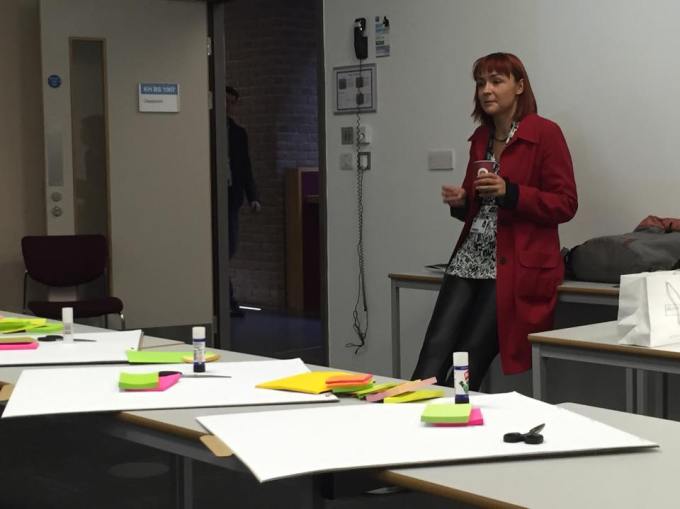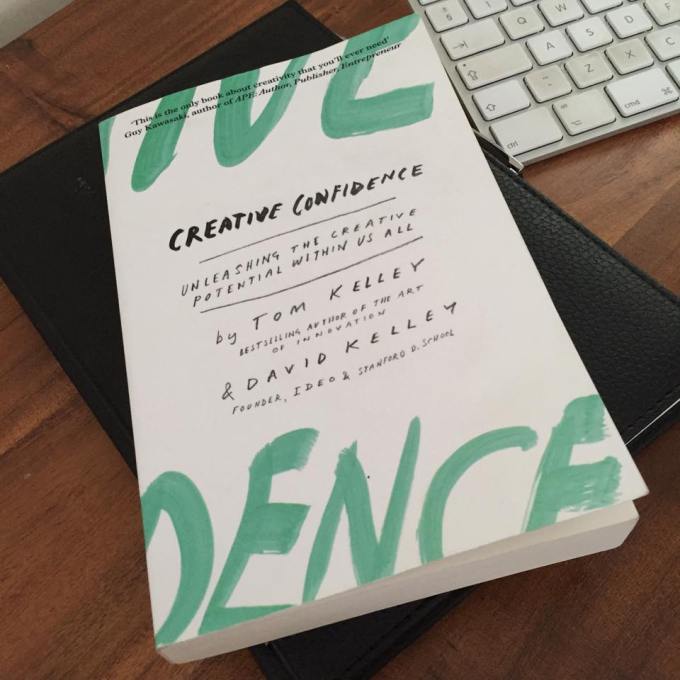At the end of the MACE enrolment week, on Friday and Saturday I attended a two-day workshop on Lean Start-Ups focused on the topic of finance and money. The class was led by Janja Song and Dan Lockton, and consisted of an introduction to design thinking in the context of researching, brainstorming and then prototyping an idea for a product or service that addressed a need of a user group.
We spent the morning of the first day getting to grips with the theory of design thinking, dealing with concepts like ‘problem framing’ as opposed to ‘problem solving’ as a spur for innovation and creativity, as well as looking at design that attempts to influence behaviour compared to design that recognises emergent behaviour, and then capitalises on this area – in Dan’s words, ‘look for what people want to do, and help them to do it better’. This approach of ‘paving the cowpaths’ seems far more successful than trying to force a certain behaviour, because as can be seen in many examples of human interaction with design, we seem to take pleasure in ‘beating the system’ and actually react in a way that completely counteracts the intention of the product or system.
This idea of problem framing is very interesting and was a new concept to me before I came across it in ‘Creative Confidence’ by Tom and David Kelley. Similarly to using empathy to gain a new perspective on a situation, it’s another tool that will enable me to think around a problem to engage creatively with it rather than getting stuck dealing with things in a more traditional linear fashion. One example of this thinking that I was talking to my brother Jack about, was a TED Talk by Amanda Palmer that discussed looking at different ways for artists and performers to receive renumeration from their fans – something that has become significantly more challenging now that the internet allows the public essentially free access to a band’s music. In this talk, Amanda re-frames the problem from being ‘how do I force consumers to pay me?’ to ‘how do I encourage consumers to want to pay me?’, and opens up a new avenue of insight into interaction with her fans.
Another important mindset that I encountered in ‘Creative Confidence’ is the realisation that failure is all part of the process on the road to success. Being relatively inexperienced in business and wanting to start a company, I have definitely cultivated a significant fear of failure, putting pressure on myself to succeed at all costs. This motivates me to a certain point, but after a while, especially when facing a mountain of a task such as starting a business, it actually grinds things to a halt; immobilising you and making you reluctant to start something until you have ALL the information you’re ever going to need to make the correct decision. Now while being informed is crucial, this epiphany that failure is ok has enlightened me, allowing me to start things and make progress; comfortable in the knowledge that if things don’t work the first time, I can always iterate – learn from my mistakes and then try again with a better-educated plan.
In an effort to spare you my continued rambling, I will get back to the lean-start up in my next post. I never thought it would be so hard to keep these to 500 words!



A great post and again – the perfect attitude. You are doing all the right things – talking with your brothers about the things we talk about in class, finding more thought-provoking materials, reframing problems, thinking how it all applies to you and your business. This is like reading a novel while it’s being written – can’t wait for the next chapter. Perfect. Well done!
LikeLiked by 1 person